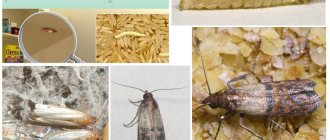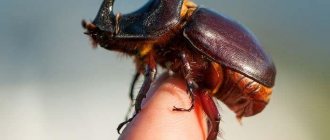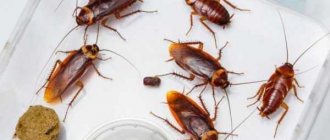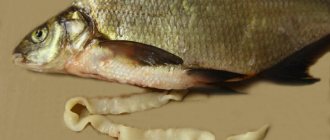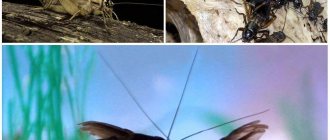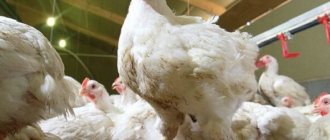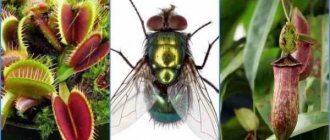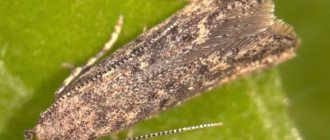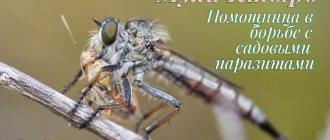03.06.2020
Despite the fact that insects seem to be rather primitive creatures, curious researchers often have questions. How does their nervous system work? How do individual species organize hierarchy? If they are so organized, does that mean they have a brain? And if there is a brain, is it different in different types of insects? In this article we will try to answer these questions.
- Insect intelligence research
- Brain structure
- Features of the insect brain
Anatomy of an insect
The general plan of the fly is the same as that of most dipterous insects. They have:
The abdomen includes the digestive and reproductive systems. This applies to all types of flies. The chest is equipped with muscles that are necessary for flight. The insect also has 3 pairs of legs.
The head is “equipped” with large faceted eyes, a proboscis and antennae. As for the internal structure, the brain is located inside the cranium. Of course, it is not the same as in humans and mammals.
Brain structure
When thinking about the brain, many people see a picture of a round substance with convolutions pop up before their eyes. With a fly things are different. The Diptera brain consists of 3 sections, namely:
Despite its fairly simple structure, the brain is responsible for the functioning of the entire body. At the same time, the fly is not able to think. She acts instinctively.
Important: in the body there are nerve nodes called ganglia, which connect to the “brain”.
Protocerebrum
This is the largest part of the brain, responsible for coordinating any life process of an insect. This part of the “control center” contains a huge number of neurons. They are responsible for analyzing and processing the information received.
Due to the arrangement of cells in the outer layer and the fibers leading to them, the fly’s brain can be compared to the control organ of a human or animal.
Inside the protocerebrum there are additional sections. Which are divided into:
Important: bees and ants have similar additional sections.
Deutocerebrum
The section is located in front of the tritocerebrum. Responsible for the nerve endings going to the antennae. "Antennae", the only fibers extending from the secondary brain. In most cases, they begin with roots:
In some species of flies these roots are not observed.
Deutocerebrum differs from protocerebrum in its simplicity. The structure diagram corresponds to a normal ganglion. This can only be explained by the fact that this section is the nerve center of only one segment - the mustache.
Tritocerebrum
The department is usually called the tertiary brain. His position is clear. The tritocerebrum is located between the other sections. However, the brain does not have a specific shape. The only thing we can say with certainty is that it is divided into;
There is a small jumper between the two halves. It passes under the intestines.
The main function of the tritocerebrum is to control the mouth and upper lip. The second may be absent in some types of flies.
Important: Tritocerebrum is associated with the sympathetic nervous system.
How does the control center work?
At first glance, it seems that the fly's brain is simple and is not capable of performing complex operations. Even “experienced” scientists are surprised at his work.
An experiment was conducted on flies at the University of California. As a result, it became clear that the “control center” of the insect determines the speed of the body moving towards the pest. Thanks to this, the fly understands in which direction it needs to move in order to avoid danger. It takes about 200 milliseconds for the insect to prepare.
Important: before taking off, the fly places its legs in such a way as to push off in the direction opposite to the approaching object.
The brain has time to assess the situation and make a decision, even if the insect:
The University of California professor who conducted the experiments believes that the “control center” of the dipteran insect has a coordinate map. Thanks to this, the fly makes decisions so quickly.
Flies, like most insects, are capable of learning. It all depends on the situation the pest finds itself in. Of course, this is not the same as what happens to a person. The insect remembers everything at the genetic level.
The brain function of insects, including flies, is being studied in many universities. Experiments allow us to understand how pests survived in the past and how much they have changed.
Education
The intelligence of insects allows them to assimilate new information and use it to search for food. For example, a bee is excellent at distinguishing colors and remembering the location of objects. She uses them to navigate in order to return several times to the flower in which she found a lot of nectar. In addition, she remembers the time when the bud was opened.
Recent research has shown that bumblebees are also capable of learning. At the University of London, they were able to teach them to roll a ball into a designated place to obtain sweet syrup. After they were shown the principle of operation several times, the bumblebees easily remembered and repeated it.
Common fly
Diptera can be called the most adapted insects on earth; they have gone through the process of idioadaptation and are able to live in different conditions. Depending on the species, they feed on:
Some flies are omnivores, while cicadas are complete vegetarians. A common feature is that adult individuals feed only on liquid food, and maggots of all types are able to develop only in a humid environment. The structure can be called a common feature; it is the same in both the ordinary housefly and the African one. Only body size, weight and characteristic color differ.
Some individuals can cause harm to humans. Insects can be parasites and carriers of intestinal diseases. Their paws step on different surfaces and are very dirty. Therefore, they can carry an infection on themselves, which, with weak immunity, can lead to illness in humans. From houseflies you can get roundworms, the causative agents of typhoid fever. From exotic species it is possible to become infected with more dangerous diseases, including those that destroy nerve cells.
Structure
All flies have the same external and internal morphological characteristics:
But the color differs depending on the species. You can find: gray, green, black, blue, spotted. House pests are often gray in color.
How many legs and wings
Probably everyone wondered how many legs a fly has, and why its touch is so unpleasant. Each individual has a pair of wings and 6 limbs. The wings are usually transparent, with visible streaks. The limbs have a more complex structure. They consist of 5 joints, which is why flies are classified as arthropods. Such limbs allow you to stay on different surfaces, including vertical ones and attach to the ceiling.
Now you know how many legs flies have, but it’s not clear why they need them. The limbs of these insects act as their organs of smell and touch. They completely replace their nose. An insect touches food with them and receives more information about it than a person with the help of his senses. Fat glands allow flies to stay on different surfaces; they produce a special secretion that “sticks” to the insect. It is due to this that we feel when it crawls across the skin.
Organs of vision
Few people can immediately answer how many eyes an ordinary fly has. People are accustomed to the fact that the organs of vision are arranged in pairs, but this insect has a total of 5 of them. On the small head there are eyes of a compound type, and between them there are three with a simple structure. The fly's compound eyes consist of small hexagons that collect bits of information about the environment. In the brain, this information is processed and put together.
Due to the structure of the visual organs, the individual is capable of obtaining an almost panoramic picture. This allows her to quickly react to approaching danger. Unlike human vision, the eyes of an ordinary fly do not allow it to concentrate on one object - it sees the entire situation around it.
"Brain" of a fly
Many people believe that flies do not have a brain. In fact, it exists, it just works differently than in humans. They are not able to think, but analyze information received from their senses. The brain consists of several parts that can only be seen under a microscope:
Oral apparatus
The structure of the oral apparatus depends on the type of nutrition of the individual. Two types occur;
How much does it weigh
Many people wonder how much a fly weighs and why we feel it on our skin. Body weight depends on its type. The indoor species is small in size, and the so-called blowflies are heavier and slower. Average insect weight: 0.15 – 0.18 g. The African species is slightly larger, and scavengers can reach 2-3 g.
Buzzing fly
You can detect a fly in your room by its unpleasant and monotonous buzzing. That is why they are called tsokotuhami. Sounds are produced by appendages to the wings called halteres. They perform an important function:
During flight, these appendages vibrate very quickly, which is why they make a loud sound. They move as fast as the wings, but in the opposite direction - we hear the work of the halteres due to the passage of air between them and the main wing.
The halteres provide additional information to the fly's brain. With their help, she does not confuse up with down and determines her position in three-dimensional space. If you deprive the clatter of this organ, it will not be able to navigate and fly.
general information
Let's start the story with the question posed in the title, let's find out how long the common fly lives.
In fact, flies do not live very long; their average lifespan is between one and four weeks. If the temperature is kept at 20-25 degrees and there is enough food, then individual individuals are able to not die for two months.
On a note! We are talking, of course, about the imago - an adult insect!
Many people are concerned about the body weight of this insect, so the second question to which we will answer: how much does a fly weigh.
Lifespan
The life cycle of a fly depends on the conditions and time of its birth. When cold weather sets in, they hide and try to wait out the difficult period. Larvae and pupae stop their development in the cool season. The first flies appear from them in the summer. Adults usually die in winter because they become infected with mold.
A person is able to shorten the lifespan of an insect at any phase. This happens using chemical and physical means. If he doesn't do this, then just one pair can reproduce more than 5 million individuals - they are very fertile.
Reproduction of house flies
Males and females participate in the reproduction process. They mate, after which the female lays eggs. Some species are viviparous, in which the female lays larvae. Up to 150 eggs or larvae are born at one time. If the insect species is oviparous, the larva is born within 24 hours. There can be up to 5-6 such clutches after one mating.
Larva
Females lay eggs in waste heaps or other fertile environments. After birth, the larvae need food and they get it from the outside, eating the waste in which they were born. The digestive juices of the fetus help liquefy food. The larvae of some species are characterized by parasitism.
After 8-10 days, the larva will collect enough nutrients and pupate. During the postembryonic period, she will have time to shed 2-3 times and increase in size. She is constantly in the process of eating food, trying to crawl deeper to hide from ultraviolet radiation and natural enemies.
Fly development
A fly can spend several days in the pupal state, and under unfavorable conditions, nutrients will help it maintain its properties for several months. As soon as it gets warmer, she will hatch. In summer, this process takes 3 to 4 days. During this time, the transformation from a larva into a young individual occurs.
Young individuals emerge from the pupa - adults. They are more active, since they need to get more food to grow than fully mature ones. By the time they reach sexual maturity, flies gain weight. They meet a male and continue to reproduce. If you wait for a couple of flies to have ideal conditions, then by the end of their life they will produce several million offspring.
How long do flies live
After you have learned all the structural features and reproduction of these insects, it is time to answer the question of how long common flies live. The ideal conditions for their residence are summer time. They show maximum longevity at air humidity of about 80% and temperature from 22 to 26 degrees. But they are able to survive under other conditions. You can meet insects at temperatures from 11 to 45 degrees above zero.
When it gets cold outside (below 11 degrees), they become less active. They begin to hibernate. This stage of development may be delayed if winter has arrived. Adults rarely tolerate it normally (they are able to survive at low temperatures for only a few days), but pupae or larvae are able to withstand this period without loss.
Under optimal conditions, the average lifespan of a fly is from 1.5 to 2 months. They can spend so much time in a room in a residential building.
How long does a female live?
A female fly in a house can live up to 2 months, regularly producing offspring. During her life she will lay at least 1000 eggs. If her breeding season occurs in winter, she will leave behind fewer offspring.
In autumn, flies begin to fly slowly, and all their vital processes slow down. If they have the opportunity to lay eggs, then the process of emergence of the larvae will be noticeable not in 24 hours, but much longer. Some of the offspring will be born only in the spring or when there is significant warming in the house.
How long does a male live?
In most cases, males live for about one month, as they do not need to reproduce. They are less careful, and in unfavorable times they choose not the most reliable shelters. In summer, it is more difficult to catch and physically eliminate them, since males weigh less and are faster.
Source
Generation or life cycle
Now let's talk about the development of the fly from a scientific point of view. The life cycle of a fly follows the path of complete transformation of insects.
Attention! The complete development cycle of insects includes four stages: egg, larva, pupa and adult!
Flies are capable of laying up to one hundred and fifty eggs at a time. During her short life, the female is capable of laying more than six eggs. It is also interesting how flies lay eggs. They are able to place them in any food that has begun to spoil, which is why it is so important to monitor the accumulation of garbage and remove it from the apartment in a timely manner.
Fly eggs are very difficult to see, as they are less than one millimeter in size.
The eggs are incubated very quickly, and literally the next day small larvae - maggots - appear. They emerge from the egg very tiny, but during development they are capable of growing more than eight hundred times.
The entire development process of maggots lasts a little more than a week under favorable conditions: an optimal temperature of 20-25 degrees Celsius and high humidity of the air and substrate in which they develop.
Maggots are in great demand among fishing enthusiasts, but for a housefly they are small and are not suitable for baiting a hook. Usually the bait is supplied by other types of flies, the so-called meat flies.
The next stage of fly development is the pupa. The larva stops feeding and increasing body weight and size and gradually pupates. Anglers call pupating maggots caster and are also used for bait.
The caster is similar to the larva, only it has a harder shell and a brownish body color. The fly also spends about one week in this stage of development.
Our help! At low temperatures, the fly larva is not able to pupate. Therefore, fishing maggots can be stored in the refrigerator for six months or more.
A week after pupation, the last stage of flies appears. As stated earlier, adult individuals live on average for about twenty-four days, and they are able to lay eggs almost every two or three days. So these same 75 tons per year come out!
Species and habitat
Some species of dipterans that live near humans are among the most ancient insects. This is exactly what the common housefly is, which, according to scientists, has been living on the planet for 145 million years.
Diptera are widespread on the planet, numbering more than 5 thousand species, of which a fifth lives in Russia. The most famous: domestic (indoor), meat, etc. They all have a similar body structure, differing only in size, color and habitat.
The smallest flies in the world are Megaphragma caribea (length 0.17 mm) and representatives of the family Myrmaridae (2.1 mm), the largest are the South American Mydas hero (grow up to 6 cm in length with a wingspan of up to 12 cm) and the New Zealand species Egsul up to 5 cm long.
Anatomy of a fly
Like all insects, the body of dipterans consists of 3 separate sections:
The fly has no bones, and instead of them the insect has a chitinous shell that covers the entire body. It is the skeleton of a fly: very strong, so it performs protective functions, and light, so it allows the insect to fly. It is quite elastic and can stretch after eating or during pregnancy in females.
Insects fly with the help of wings, which are attached to the chest. There are only 4 of them (front and rear pair). Only the front pair of wings of the fly are used for flight. The posterior pair are transformed into halteres and are used to maintain balance.
The weight of a fly depends on its type - a housefly weighs on average 12 mg, but when eggs are formed it increases to 15 mg, as well as after eating. Males are usually slightly smaller in size than females and their weight is less.
The fly's legs are 5-segmented, have 2 claws at the end with suction cups on the bottom. This device helps insects crawl on any surface, even smooth or vertical. For those wondering how many legs a fly has, there are only 6 of them.
Many people pay attention to the fact that these insects love to rub their legs. Scientists believe that this is a hygienic procedure for them, during which they wipe their limbs stained with sewage in a certain order: first, the front ones, then they wash the head and hind legs with cleaned paws, and finally they wipe the wings with the hind legs.
What are IQ tests for?
Intelligence quotient (IQ) tests do not measure how smart a person is. They only make it possible to understand how developed certain abilities are in him - speech, logic, the ability to remember. We can say that these tests measure the level of specific abilities (in linguistics, mathematics.). But we are talking only about the level that exists in specific areas and at a specific time. But it is necessary that these opportunities be adapted to the needs of this or that individual and to the needs of the environment in which he lives.
Geniuses use the right hemisphere more
Head structure
The individual parts of the fly's head have their own names:
The organs of smell and taste are much more advanced and subtle compared to humans. The sharpness and their cricketing ability are associated with a large number of “nostrils,” although the olfactory organs are separated from the respiratory organs and are located on the antennae; some species of dipterans also sense taste with their paws, or rather, with their last segments on the legs.
But the ears of a fly are receptors - nerve cells that respond to external stimuli (sounds, temperature, light, vibration, etc.).
The structure of a fly's eyes is unique and has served as a model for scientists to make discoveries. Huge spherical organs of vision consist of several thousand facets, similar to spyglasses. Each of them sees a certain piece of the surrounding world, and its image is then transmitted to the brain and puts together a “overall picture” from the mosaic. Thus, the fly has a full 360° view and quickly reacts to any movement around it.
Constant construction
The brain changes not only during evolution, but also throughout a single life. The brain of a fetus in the womb is constantly developing, and the number of its neurons increases many times over. The brain of a newborn contains even more neurons than the brain of an adult! That is, some of these cells are then removed by the body. However, the main difference between the newborn brain and the adult brain is the number of connections between neurons. A baby has much less of them, but from the very first days of life it is constantly growing. This is what makes learning possible. It has many neurons. In old age, brain development slows down.
Respiratory and digestive organs
The structure of the respiratory system is very different from the human one. You can explain how a fly breathes as follows. The fly has no blood. She inhales air through holes located on the sides between the head and the rear end of the body. Each “nostril” turns into a tube that forms a network of air inside the body. Such air vessels supply oxygen to all other organs, i.e., the heart of a fly is the same thin tube that periodically contracts and pushes air inside.
The digestive system of these insects is even more interesting. Their main diet consists of human food remains and organic matter. The fly's mouth secretes saliva, which contains specific enzymes that can dissolve tissues and solids. First, with the help of a proboscis, the fly injects saliva into the food it finds and waits for its action. After the food turns into liquid, the insect begins to lick it with its mouth. After saturation, the insect begins to defecate frequently - almost every 5-15 minutes. She regurgitates the digested contents of the stomach, leaving small black discharge on various objects, dishes and food.
Reproductive system
The genital organs are located in the abdomen. In males they are represented by testes, in females - by eggs, accessory glands and ducts. The structure of males is distinguished by the presence of special “grabs”. To raise offspring, each female lays from 70 to 150 eggs. Some species are viviparous (meat and cadaverous).
The penises of male flies were studied by Charles Darwin, who was amazed at their complex structure and the presence of growths and hooks. Modern scientists have found that their genitals have the ability to twist up to 180°, and some types of flies can rotate it up to 360°. This is necessary for ease of mating, so as not to turn upside down.
Brain structure
Flies have a ganglion nervous system, which consists of individual nodes (ganglia), which are connected to each other by trunks and cords. The anterior 3 nodes are united into the suprapharyngeal ganglion, which can roughly be called the brain. It consists of 3 sections and performs a coordinating function in choosing the behavior of a dipteran insect.
Reflexes are performed by another organ - the reflex arc. However, even such a simple structure allows the insect to achieve unique results when changing body position and choosing the direction of flight. But their memory is very short and is only 2.7 seconds.
Some brain functions in flies that fascinate scientists:
The above information about the structure of the fly’s body and the properties of its body proves that all living beings on the planet bring both benefit and harm. They are original and interesting, as proven by research by scientists and biologists.
Source
Musculature
Insect muscles are unique. They have extreme contraction power. Thanks to this, some insects can lift a load tens of times greater than their own. Another feature is the frequency of contractions. This causes various forms of flight: active, forward, passive, hovering. Skeletal muscles contract the limbs and move the wings. It is formed by striated tissue. The heart of insects consists of muscle fibers covered with a layer of epithelium.
